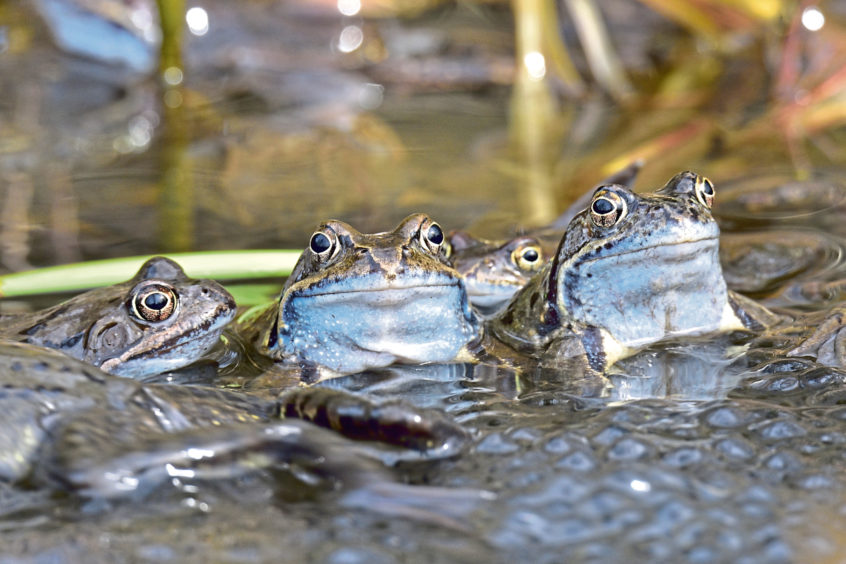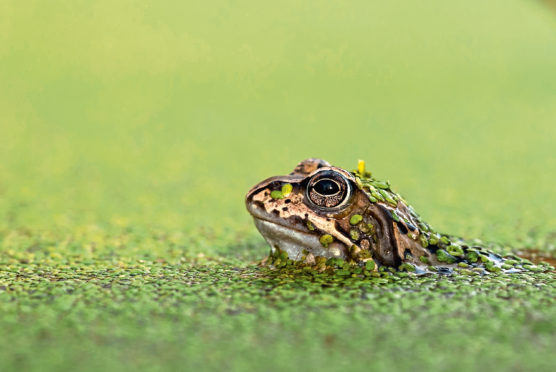Frogs and toads often move to their breeding ponds and ditches in large numbers under the cover of darkness, especially on mild and wet nights.
Ever so slowly, inch by inch, I crawled across the damp, muddy ground towards the edge of the shallow pool, my eyes focused intently upon the frog’s head that was poking through the limey-green surface film of floating duckweed.
Frogs are wary creatures, even when spawning, and I knew that one sudden movement on my part would send this little amphibian swirling down to the bottom of the pool. With a bit more pulling of the arms and pushing of the legs, I slithered to the fringe of this wild pond. The beady eyes of the frog stared at me and I stared back. But it soon decided I represented no danger and it began to gently croak.
In frog-speak, these soft croaks were probably a thing of great musical beauty, and even to the human ear they have an appealing resonance. The frog’s pale throat-patch quivered in croaking contentment, and then another head popped-up. The croaking turned into an amphibian duet, a real-life version of the frog chorus.
It is hard to describe the wave of happiness that swept upon me at as I lay spread-eagled on the ground right next to this duo of croaking frogs. At that moment, there was nowhere else in the world I would have rather been. The power of nature to relax and destress the mind is inestimable. Nature is a great soother, a miraculous medicine that lies in boundless quantities on our very doorsteps.

These courting frogs were but just one sign of spring that is now rapidly enveloping both upon land and sea, and earlier that week I visited the magnificent cliffs at the Bullers of Buchan near Peterhead in Aberdeenshire.
As I approached the cliff edge, a cacophony of noise drifted across the sea breeze. I peered over, and jostling down below on a rock ledge was a group of guillemots and razorbills. These auks, which belong to the same family as puffins, were excitedly inspecting their nesting ledges, as well as engaging in an eager courtship display by rapidly bowing their heads up and down.
It will be a couple of months yet before they lay their eggs, but this was all about establishing pair bonds and socialising. After a winter of oceanic wanderings across storm-tossed seas, these birds looked delighted to be back in each other’s company. I know from experience that these early season communal gatherings are erratic, and that if I returned the next day there would probably be no guillemots present. But as spring progresses the cliff ledges will soon become permanently occupied in preparation for rearing young.
Near the top of the cliff, I spotted two fulmars canoodling on a rocky ledge, their bills clicking and clacking against one another as they renewed and strengthened their relationship. They were a pair of happy lovebirds and a wonderful symbol of this season of renewal.










